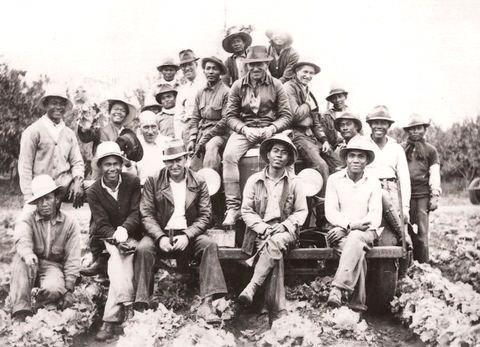FIlipino Immigration from Philippines to California

The Start of Filipino Immigration
The first organized Filipino emigration to California began in the early 1900’s. Through the pensionado system, initiated in November 1903, the first group of about 103 Filipino students arrived in California to study at the government’s expense. Under this program, by 1912 a total of 209 Filipinos and Filipinas had obtained college degrees or advanced training in the United States, at a total government expenditure of $479,940.
These trainees in democracy were expected to transmit the ideals they had absorbed from their American-based education to the Islanders.
The “first wave” of Filipino immigrants were immigrants who were usually less educated and were recruited to fill the needs of the Hawaiian sugar plantations, and later to fill the farm labor vacuum in the Imperial, San Joaquin, Delta, and Salinas valleys in California.
At first, immigration to the mainland was more or less a re-emmigration of Filipinos from Hawaii to California, but from 1923 onward there was a large flow of immigrants directly from the Philippines. From 1923 to 1929, Filipino labourers arrived in the state at an annual average of 4,077. The majority of “first wave” immigrants were young, single males between the ages of 16 to 21. The California State Department makes the point that of the 24,123 “first wavers,” 11,316 were between 22 and 29 years of age; 2,837 were between 30 and 37 years old; and there were only 801 aged between 38 and 44. Those over 45 years of age numbered 232. There was one basic difference in age distribution between arriving males and females: the age of the females was much lower than that of the males; 35.3 percent of females were under 16 years of age.
For California’s economic growth, the significant role the Filipinos played in the labor force was agricultural production and domestic services. Over four-fifths were in the prime of life between the ages of 14 and 45.
Unique Filipino Citizen Status
Filipinos had a unique national status which stemmed from the political relationships between the United States and the Philippines, and particularly from certain U.S naturalization prohibitions based on race. Congress had provided in 1902 an Organic Act or the Cooper Act, which defined Filipinos as citizens of the Philippine Islands and are entitled to the protection of the United States Government but not to United States Citizenship. They were free to exercise all the privileges of any American citizen, except the right to vote, become naturalized citizens, join the U.S Armed Forces, establish a commercial business, own real estate, hold public or private office at any level, and live in the American residential community. The prohibition against naturalization of Filipinos was based on the First Congressional Naturalization Act of 1790, which decreed that U.S citizenship was to be conferred only to “free white aliens”.

Farm Labor for Filipinos
Filipinos had to rely on farm labor contractors or some private fee-charging employment agency who were in business of furnishing laborers to farm operators. The labor contractors who were either Filipino, Japanese, Chinese, Hindu, or Mexican entered into agreements with the growers to plant or harvest crops. The contractor had many responsibilities. He was the one who hired the men needed to plant or harvest a crop, and since he was considered the employer of these men, he also paid them their wages. He also acted as the intermediary between the workers and the grocery and trade companies which furnished supplies and food to those who needed credit. He arranged for credit at harvest time and paid off the laborers’ debts by deducting the amount due from the workers’ paychecks. The problem with housing was taken care of by the labor contractor. New Filipino laborers were forced to accept housing in bunk houses made of discarded pieces of wood. These house facilities were provided free of charge if there were owned by the growers, but when they were operated by the contractor, Filipino laborers had to pay various rates for room and board. Some paid $2.00 a month for a single cot in a bunkhouse.
Filipino workers sought refuge in Filipino neighborhoods not only because they were not allowed to live in American residential districts, but because among their own people they felt protected from persecution. Thus, little settlements of immigrants sprang up in California cities and formed little islands of natilaities within the dominant culture. In Stockton, for example, El Dorado Street came to be known as “Little Manila,” a landmark for Filipinos.